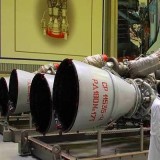How Red Sea International Airport aims to lead by example in sustainability

Red Sea Global stands as a cornerstone of Saudi Arabia’s ambitious Vision 2030 strategy.
Backed by the Public Investment Fund (PIF), the Kingdom’s sovereign wealth fund, this gigantic tourism development project is one of the flagships of Saudi Arabia’s newfound embrace of tourism as a means to rid its economy of its dependence on oil.
A Belgium-sized area along Saudi Arabia’s western coastline, along with several dozen adjacent islands, have been designated for development as one of the world’s top seaside leisure destinations.
It is expected that, by 2030, up to 50 high-end resorts will have opened their doors across 22 islands – of which nine are already being developed – plus six mainland sites located within the territory managed by the development company.
And, as is often the case in Saudi Arabia’s ambitious development projects, aviation plays a key role in this story.
While calling it a ‘greenfield’ site may be a bit of stretch on account of its sandy desert location, Red Sea Global is being built from scratch at a location far from any major population center, so it was necessary to build a dedicated airport too.
Designed by renowned British architecture studio Foster & Partners and managed by Irish airport operator daa, Red Sea International Airport (RSI) is therefore the international gateway which connects the newly developed area to the rest of the world.
Although construction work was still ongoing as of April 2025, Red Sea International Airport has been operational since September 2023 and has already been welcoming guests headed for the few resorts which are already open for business.
RELATED
Saudi Arabia hands out licenses for industrial aerospace projects
What makes this project particularly interesting for industry observers is the fact that, being aware of the growing concern about the environmental impact of aviation, its promoters have designed it with sustainability as its core guiding principle.
Could Red Sea International Airport become a blueprint for other airports?
AeroTime spoke with Michael White, its Chief Commercial Officer (CCO), and Abdulaziz Alabdan, Executive Director for Airport Operations at Red Sea Global, in order to learn more about the airport and its approach to sustainability.
Both executives highlighted the fact that the airport cannot be understood in isolation from the surrounding tourism development project. As such, it is designed to act as a sort of ‘reception desk’ for the neighboring resorts.
“Passengers are guests from the very moment they land,” explained Alabdan.
The airport’s premium traffic profile and limited number of passengers (even if all resorts operated at capacity, airport traffic would not be expected to exceed one million passengers per year in each direction) makes it easier to provide the sort of “private terminal” experience that its developers seek.
However, Red Sea International Airport has incorporated a number of new ideas that White and Alabdan hope will also set new standards in passenger experience for other airports – in Saudi Arabia, which is investing heavily in this type of infrastructure, and beyond.
For example, at a time when many new airports have chosen to centralize functions in one single large terminal, Red Sea International has opted for a decentralized five-node structure. Each of these nodes acts as a self-contained independent terminal, doing away with some bottlenecks and shortening walking distances.
Another singularity – though this one may be rather more difficult to replicate in more mainstream settings – is that the baggage reclaim area has been pared down to the minimum, with luggage being forwarded directly to the hotel.
But if there is one area in which both executives take pride, it is the sustainability focus of the project. This is a central theme in all Red Sea Global marketing materials, as the Saudi company aims to demonstrate that world-class luxury and economic growth is compatible with environmental stewardship.
But wouldn’t it be more sustainable to just leave the area undeveloped?
This is a question that executives at Red Sea Global are often asked, Alabdan said. He referred to the fact that Saudi Arabia is pivoting its economy away from its dependence on oil and extractive industries and how tourism can provide an alternative. This move not only provides economic opportunities for the country and its people, but also does so in a way that is, as a whole, less impactful on the environment than the current economic model.
“If you wish to keep having economic growth, it is better to do so in a way that follows the best possible environmental practices,” he explained.
In fact, Red Sea Global takes the concept of sustainable development even further and discusses ‘regenerative development’. This, Abdalan explained, means proactively looking for ways to leave an area better off than it would have been had development not taken place.
For example, he pointed out that only 1% of the area designated for the Red Sea Global project is actually going to be developed (there are over 90 islands in total in the vicinity). A number of environmental programs, from mangrove restoration to marine wildlife protection, are going to be rolled out in the other 99%.
Setting sustainability standards
As for the airport, Red Sea Global has opted for an integral approach, while acknowledging the current technological limitations when it comes to the main source of emissions: actual aircraft movements.
In this regard, the company is opting to invest in sustainable aviation fuel (SAF). In February 2025, Red Sea Global became the first Saudi airport to make SAF available at its facilities.
This first fuel shipment was produced by Neste, one of the world’s leading SAF producers, through the HEFA process using cooking oil as feedstock. Red Sea Global then imported it into Saudi Arabia by way of the Arabian Petroleum Supply company (APSCO), which acted as a distributor.
White and Alabdan reflected on the fact that one of the world’s top oil producers is importing SAF. In fact, while there’s currently no domestic production of SAF in Saudi Arabia, Alabdan mentioned that, in order to cover its non-SAF fuel supply needs, Red Sea Global is sourcing some of the so-called ‘low carbon aviation fuel’. This is conventional fossil fuel which has been produced following relatively lower carbon intensive processes.
Alabdan reiterated the developer’s commitment to continue investing in SAF, however.
“SAF is more expensive than conventional fuel, but someone has to start. What we are doing here is create a market signal, driving demand, and paving the way for wider SAF adoption.” he stated, not without adding “Let’s take as much SAF as we can take! Why do we have to wait?”
Despite the limited amounts of SAF available globally, the still relatively small number of flights at the airport, with only three airlines offering scheduled services (Saudia, flynas and flydubai) makes it possible for Red Sea Global to supply SAF in a relatively high blend of 35%.
Red Sea Global’s own local airline, Fly Red Sea, is another consumer of SAF at the airport. This small seaplane operator links the Red Sea International to the different island resorts with a fleet of four amphibious Cessna Caravan 208 aircraft.
In fact, having its own airline allows Red Sea Global to be active in the aviation sustainability challenge in a more hands-on fashion. For example, the developer has been working with a number of advanced air mobility startups, including hydrogen-propulsion developer ZeroAvia, as well as several eVTOL developers, such as Joby, EHang and Archer, to support hydrogen and electric air mobility.
ZeroAviaThe relatively short distances involved in transferring passengers between the airport and the adjacent island resorts represent a potentially interesting use case of these technologies.
And while Red Sea Global may have little direct influence in the ultimate development of these game-changing technologies, there are areas in which it can roll out much more impactful policies, such as the construction of its own physical infrastructure and the daily operations of the airport.
The airport terminal, for example, has been designed with the goal of obtaining Platinum LEED certification, the highest possible level in the green building certification system developed by the U.S. Green Building Council (USGBC).
Likewise, Red Sead Global is investing in renewable energy generation to guarantee that the majority – potentially between 80-100% – of the energy used on site at the airport and across the different developments comes from green sources.
What’s more, all of Red Sea Global’s suppliers need to sign up for the company’s environmental policies in order to do business with it.
But besides this explicit requirement, Red Sea Global aims to lead by example.
“We are doing it! Saudi Arabia is doing it! That’s the message we want to send to the world.” concluded Alabdan. The post How Red Sea International Airport aims to lead by example in sustainability appeared first on AeroTime.
Red Sea Global stands as a cornerstone of Saudi Arabia’s ambitious Vision 2030 strategy. Backed by the Public…
The post How Red Sea International Airport aims to lead by example in sustainability appeared first on AeroTime.




